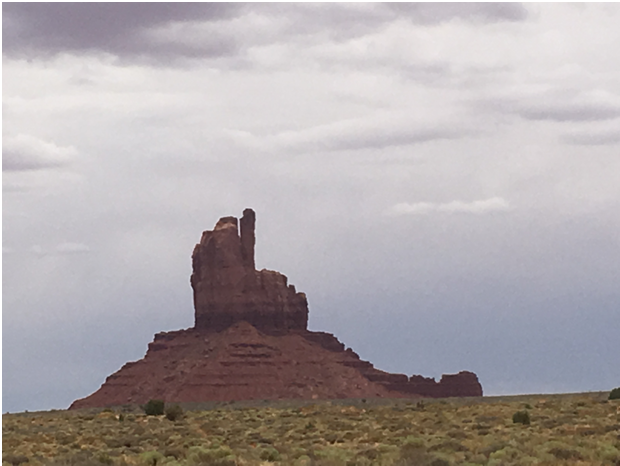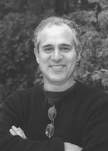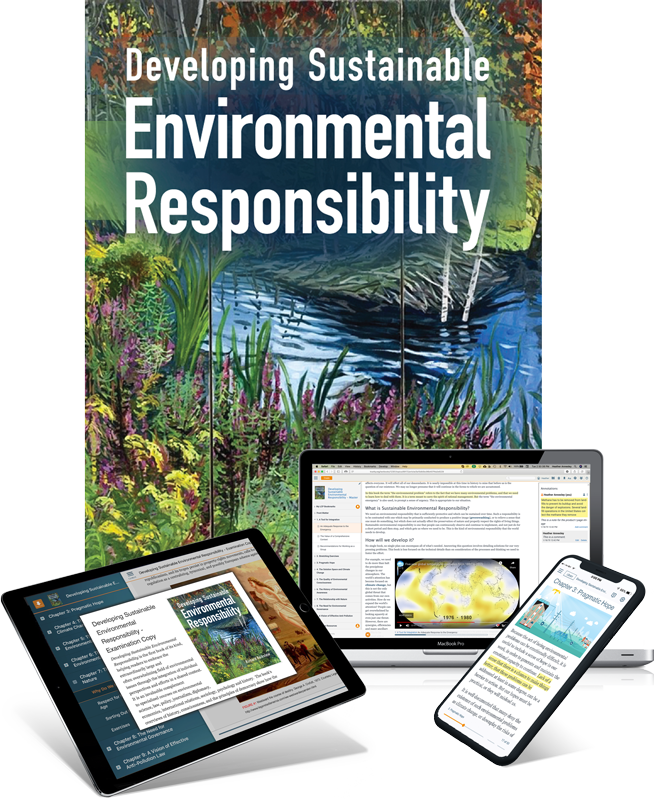Context and Purpose
In 1893 the historian Frederick Jackson Turner famously said the American frontier was closed.[1] The great openness of the West had brought a physical freedom for those who came to this country, but now it was full. This was a narrow perspective, ignoring that of the people already here, who had already lost freedom as a result of the arrival of the crowd. Now, with so many billions of people, everyone has to face the same fact, that a crowded world is in some sense closed.
We do however still have some open spaces, because of the wisdom of past leaders. A traveler in the Great American West will find what Ken Burns’ film calls “America’s Best Idea”[2] - our National Parks. Wisdom also gave us another kind of open space - the freedom of thought and conscience. The First Amendment opens the world of closed belief to a shared space. The possibility of mutual respect for the thoughts of others creates a new world of freedom.
Travelers to the West can also find the park known as Monument Valley. It is not a federal park. It is a Navajo park. Its website provides its real name: Tsé Bii’ Ndzisgaii (Valley of the Rocks). It is owned and preserved and opened to visitors by the people who were there before the land became crowded. We can be grateful for their wisdom in not building hotels that would mar its extraordinarily beautiful landscape.
We do however still have some open spaces, because of the wisdom of past leaders. A traveler in the Great American West will find what Ken Burns’ film calls “America’s Best Idea”[2] - our National Parks. Wisdom also gave us another kind of open space - the freedom of thought and conscience. The First Amendment opens the world of closed belief to a shared space. The possibility of mutual respect for the thoughts of others creates a new world of freedom.
Travelers to the West can also find the park known as Monument Valley. It is not a federal park. It is a Navajo park. Its website provides its real name: Tsé Bii’ Ndzisgaii (Valley of the Rocks). It is owned and preserved and opened to visitors by the people who were there before the land became crowded. We can be grateful for their wisdom in not building hotels that would mar its extraordinarily beautiful landscape.
(Open space can be transformative. Its physical freedom can resonate internally. Seeing the world as it is naturally formed can liberate you from a sense of being confined by human-made environments. Apprehending great sections of the world can make you feel as if you can perceive the very forces that determine our existence. The mind tries to grasp the mystery of it while the soul admires the greatness of it.
It may be that some people think something or someone else is looking out for the welfare of life, and they don’t have to. It may even be that they don’t much care if humanity harms life itself. But if they could truly see the beauty of the wide world would that not stir some sense of loyalty to it? Would it not help them know that they are part of what they see around them, are made of it, and we all belong to it and to each other?
Today, much attention is on the reaction to the new great new world culture of perceiving and acknowledging each other – multiculturalism. Those who have been disrespected in the past, ignored, shunted aside, killed, are now increasingly acknowledged and valued. But some mistakenly see this as a threat. It is not the world they knew. They may feel a loss of the sense of certainty and/or security they had with the smaller worlds they inherited or adopted. We are living through epidemics of fear of refugees, religions, ethnicities, orientations.
There is only one good thing about the fact of environmental disaster, and that is that it speaks loudly to us about universal and shared responsibility. Through the storms it remains, standing up like the stone formations in Monument Valley – telling us what does not succumb. While the storms of propaganda and fearful imaginings blow around us, the hard stone fact that we must act together remains.
The butte formations in the Valley of the Rocks are statements by the Earth about the truth of its existence. Some of it does not stand up to change and disappears, but some of it remains through time. In the same way, the openness to all embodied in the idea of respect for all beliefs, for all people, for all individuals, will eventually expose the truth that we must not just respect the earth, but each other as well. The retreat into cherished identities is a futile attempt to preserve familiar ground, but it will wear away.
In the summer of 2019 at the Santa Fe Museum of Indian Art and Culture an exhibit on language included a Diné (Navajo) word for Thought of the Universe - Sá՚ahnaághai - which also means inner form of Speech. Bik՚e Hozho is Speech of the Universe and outer form of thought.
The Earth speaks to us daily. When bees buzz, we hear it. When flowers proclaim their colorful beauty, we see it. When the clouds break and the rain pours down, we can’t miss it. But much of what the Earth is saying goes unheard. Big Chief (Nataani Tso) is saying something. It seems an instance of Speech of the Universe, reflecting Thought of the Universe.
What I imagine, I take to be the universe speaking in my thoughts: the inner form of speech. It makes me see a hand raised. It makes me feel sad for the missing fingers. I sense the chief – the spirit of the Earth itself - thrusting its hand up to give us a warning and a reminder, and perhaps a blessing, should we heed it.
If you do not hear the Earth speaking to you, try going out into the open spaces. I may not be able to explain the voice of the universe that Big Chief, and all the other natural formations that I hear testifying to essence, but something drives my outer speech to speak of the compassion that moves one to be try to be responsible. That I cannot justify that feeling with reason does not allow me to ignore it. That I do not understand and cannot explain why witnessing the beauty of nature speaks eloquently does not change that it moves me to try.
Acknowledgement: The Diné words about Thought of the Universe in the museum exhibit are from Gloria Emerson, and the translation of Big Chief is thanks to Joyce Begay-Foss. The language exhibit including Emerson's piece is permanent. Visitors should not miss the piece by Edmund Ladd' (Zuni Pueblo) on the deaths from loneliness of native languages and the children taken from their families to be assimilated into the dominant culture.
[1] In "The Significance of the Frontier in American History," delivered to a gathering of historians at the World's Columbian Exposition in Chicago.
[2] Produced by Burns and Dayton Duncan. http://www.pbs.org/nationalparks/
It may be that some people think something or someone else is looking out for the welfare of life, and they don’t have to. It may even be that they don’t much care if humanity harms life itself. But if they could truly see the beauty of the wide world would that not stir some sense of loyalty to it? Would it not help them know that they are part of what they see around them, are made of it, and we all belong to it and to each other?
Today, much attention is on the reaction to the new great new world culture of perceiving and acknowledging each other – multiculturalism. Those who have been disrespected in the past, ignored, shunted aside, killed, are now increasingly acknowledged and valued. But some mistakenly see this as a threat. It is not the world they knew. They may feel a loss of the sense of certainty and/or security they had with the smaller worlds they inherited or adopted. We are living through epidemics of fear of refugees, religions, ethnicities, orientations.
There is only one good thing about the fact of environmental disaster, and that is that it speaks loudly to us about universal and shared responsibility. Through the storms it remains, standing up like the stone formations in Monument Valley – telling us what does not succumb. While the storms of propaganda and fearful imaginings blow around us, the hard stone fact that we must act together remains.
The butte formations in the Valley of the Rocks are statements by the Earth about the truth of its existence. Some of it does not stand up to change and disappears, but some of it remains through time. In the same way, the openness to all embodied in the idea of respect for all beliefs, for all people, for all individuals, will eventually expose the truth that we must not just respect the earth, but each other as well. The retreat into cherished identities is a futile attempt to preserve familiar ground, but it will wear away.
In the summer of 2019 at the Santa Fe Museum of Indian Art and Culture an exhibit on language included a Diné (Navajo) word for Thought of the Universe - Sá՚ahnaághai - which also means inner form of Speech. Bik՚e Hozho is Speech of the Universe and outer form of thought.
The Earth speaks to us daily. When bees buzz, we hear it. When flowers proclaim their colorful beauty, we see it. When the clouds break and the rain pours down, we can’t miss it. But much of what the Earth is saying goes unheard. Big Chief (Nataani Tso) is saying something. It seems an instance of Speech of the Universe, reflecting Thought of the Universe.
What I imagine, I take to be the universe speaking in my thoughts: the inner form of speech. It makes me see a hand raised. It makes me feel sad for the missing fingers. I sense the chief – the spirit of the Earth itself - thrusting its hand up to give us a warning and a reminder, and perhaps a blessing, should we heed it.
If you do not hear the Earth speaking to you, try going out into the open spaces. I may not be able to explain the voice of the universe that Big Chief, and all the other natural formations that I hear testifying to essence, but something drives my outer speech to speak of the compassion that moves one to be try to be responsible. That I cannot justify that feeling with reason does not allow me to ignore it. That I do not understand and cannot explain why witnessing the beauty of nature speaks eloquently does not change that it moves me to try.
Acknowledgement: The Diné words about Thought of the Universe in the museum exhibit are from Gloria Emerson, and the translation of Big Chief is thanks to Joyce Begay-Foss. The language exhibit including Emerson's piece is permanent. Visitors should not miss the piece by Edmund Ladd' (Zuni Pueblo) on the deaths from loneliness of native languages and the children taken from their families to be assimilated into the dominant culture.
[1] In "The Significance of the Frontier in American History," delivered to a gathering of historians at the World's Columbian Exposition in Chicago.
[2] Produced by Burns and Dayton Duncan. http://www.pbs.org/nationalparks/
EXERCISE
Take a day or more to go out into nature. Do not use your phone. Try to feel what the natural world is telling you, without putting it into words. Ask yourself what your emotional response is to the trees, the land, the grass, the insects, the birds, the clouds, the sun and the wind. Then, after you have felt something, try to put it into words. If you don’t feel anything, go out again and again until you feel you hear the real world speaking to you.
Take a day or more to go out into nature. Do not use your phone. Try to feel what the natural world is telling you, without putting it into words. Ask yourself what your emotional response is to the trees, the land, the grass, the insects, the birds, the clouds, the sun and the wind. Then, after you have felt something, try to put it into words. If you don’t feel anything, go out again and again until you feel you hear the real world speaking to you.

 RSS Feed
RSS Feed

